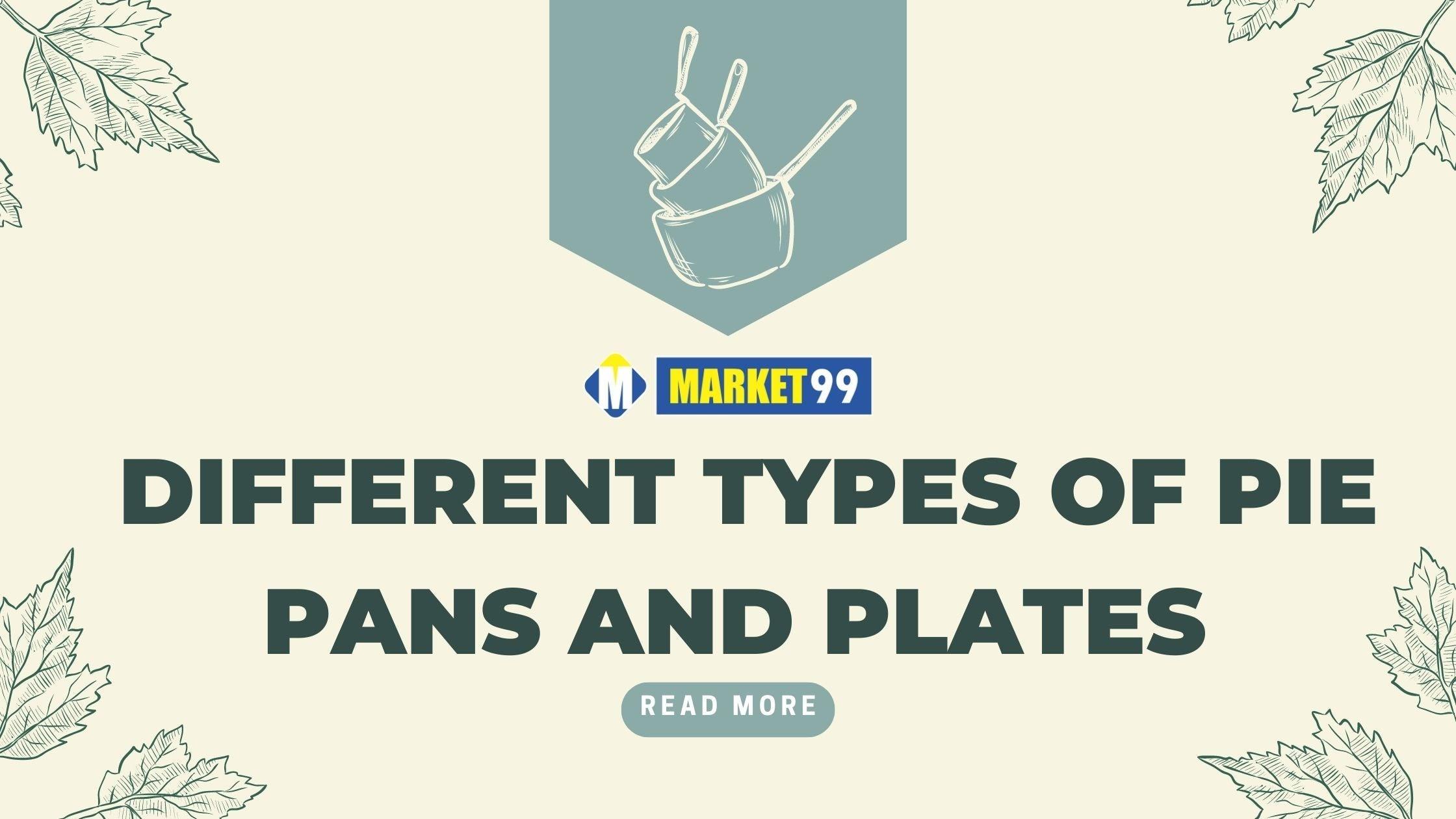Different Types of Pie Pans and Plates

Baking can be both complex and rewarding. With the right tools, the process becomes easier. When baking pies, it could seem as though all pans are made equal. However, there are many different pie pans available, each with a unique set of properties. The kind of pie you are cooking will determine the kind of pan you require. You will require more than one pan or plate to prepare different sorts of pies because each has its optimum function. For instance, if you are baking an apple pie, you will need a pan that will spread heat evenly because the contents will need to cook longer.
There are various categories of pans-
- Ceramics: Ceramic pie pans are frequently available, such as ones with a turkey pattern for Thanksgiving or a Christmas tree for Christmas. Some of them have a gloss on them that enables you to bake them at greater temperatures. They are available in a wide variety of stunning forms, hues, and patterns. Despite being somewhat heavy, they are very robust. Others have non-slip bottoms, while others have grips. The most expensive pie pans are often made of ceramic; nonetheless, they are the most durable and evenly transmit heat, resulting in a well-cooked pie with a crust that doesn't burn before the filling is done. But not all ceramic pans can withstand extreme heat or cold.
- Glass: The majority of glass pie pans are straightforward. The ability to look through them, though, makes it simpler to determine when your pie is done. When working with contents that need to cook for longer periods of time, glass pie dishes assist you to avoid burning the crust since they transfer heat more evenly than metal pans do. Glass pans are lighter than ceramic dishes but heavier than metal.
- Metal: For many bakers, metal pie pans are a popular option.
- Stainless steel and non-stick aluminium are two of the most widely utilised materials. Metal has one advantage over glass—it won't break, though it can bend and dent. Metal pans may be advantageous for people who regularly bake because they are frequently simpler to store. They often yield good pie baking outcomes, with the majority of types having good heat retention.
- Copper: Pans made of copper has a conductive surface that distributes heat evenly and is also attractive. This makes this a great option for folks who frequently host because it matters when serving Sunday dinners and holiday meals. These durable metal pie pans are suitable for use in the freezer, refrigerator, and oven.
- Cast iron: To make a quiche crust noticeably flakier and more tender, use cast iron pans because cast iron heats up considerably faster than glass or aluminium. A cast iron pie plate will be the best choice if you prefer the crust over the contents.
- Disposable pie pans: They may be preferred by those who don't bake frequently and don't feel the need to maintain baking equipment on hand. These pans are often affordable and widely accessible. They can either be recycled or thrown away after the pie has been consumed because they are composed of very flexible, thin metal. Some of these pans might even include a pre-made crust, which would make baking even simpler for someone who finds it tedious.
- Pyrex pie plates offer a solution to the issue of glass cookware that can break or split under intense heat. In either heat or cold, Pyrex maintains its shape and form. It is the perfect option for individuals who make eye-catching tiered pies and cobblers because you can see through it.
- Another criterion from which you can choose pans is by determining their size and shape.
- Oval pie pans- When you mention that you are making a pie, most people immediately picture oval pie plates. The oval pie pan, which is the shape that pies are traditionally made in, is probably what your standard pie recipe calls for.
- Square pans- These can be used to bake dump cakes or brownies. These deeper pans can contain the enormous amount of fruit pie filling as well as the additional room required for a cobbler's bottom and top crusts.
- Rectangle pans- This type of pan fits in one standard size, a 9"x13", which you can also use for other dessert dishes like sheet cakes and huge batches of brownies. The size disparity between household pans and industrial pans can be problematic if you work in the hospitality or restaurant industries.
- You may prepare single-serving pies using miniature pie pans, like this set of aluminium deep dish pie plates. With these pie tins, you may add different toppings or flavours to each pie, which prevents your visitors from overindulging.
Conclusion
Choosing the best pie plate for your needs can be overwhelming with so many products on the market. Using our suggestions can assist you in selecting the ideal pie pan for the type of pie you are creating, one that is of the highest quality and value. You get a vast variety of pans and plates at Market99 stores and on the website both.
- Tags: All Blogs
0 comments






